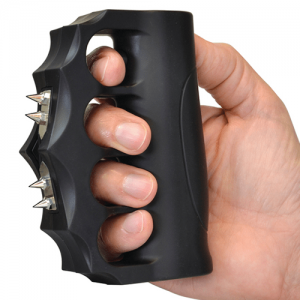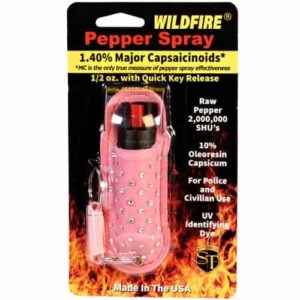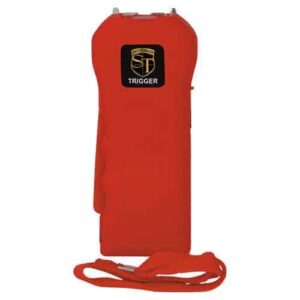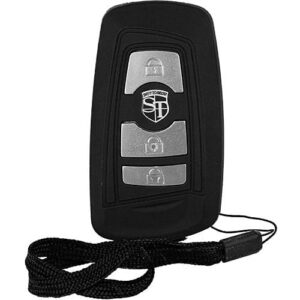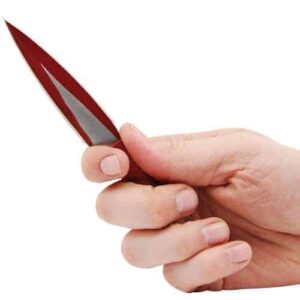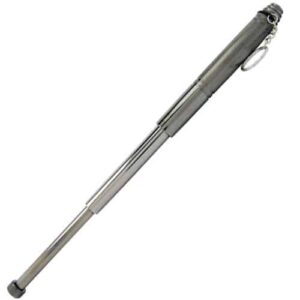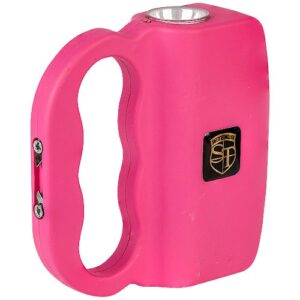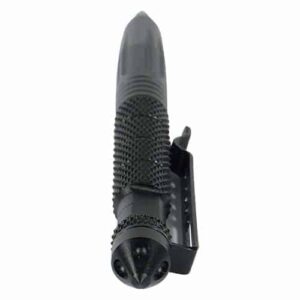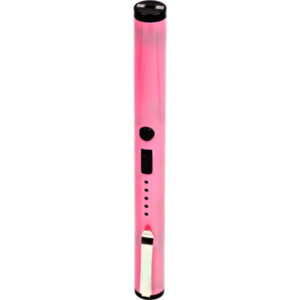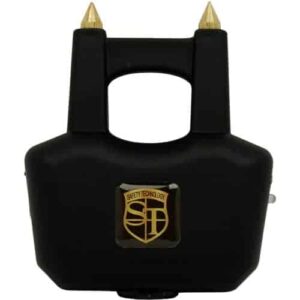In this comprehensive guide, you will discover everything you need to know about mace self defense. Whether you’re a beginner or looking to enhance your existing knowledge, we’ve got you covered. From understanding the basics of mace self defense to learning effective techniques, this ultimate guide will equip you with the necessary skills to protect yourself and stay safe in a variety of situations. Get ready to empower yourself with the knowledge and confidence to navigate the world with peace of mind.
Table of Contents
ToggleWhat is Mace?
Definition
Mace, in the context of self-defense, refers to a non-lethal weapon that is used to incapacitate and deter potential attackers. It is a type of aerosol spray that contains a powerful chemical irritant, typically oleoresin capsicum (OC), which causes temporary blindness, difficulty in breathing, and intense pain when it comes into contact with the eyes, respiratory system, or skin. Mace is designed to give individuals a means to protect themselves in threatening situations without causing permanent harm.
History
The use of mace as a defensive weapon dates back centuries. Its origins can be traced to ancient civilizations such as Egypt and China, where various substances were utilized to incapacitate adversaries. In more recent history, the invention of modern mace is attributed to Allan Lee Litman, a former TV cameraman who developed and patented a chemical spray in the 1960s. Since then, mace has become a popular self-defense tool, offering individuals a non-lethal option to protect themselves from potential harm.
Types of Mace
There are several different types of mace available in the market, each with its own unique features and characteristics. The most common forms of mace include pepper spray, gel, and foam. Pepper spray, the traditional form of mace, contains OC as the primary irritant agent and is dispensed in a liquid spray. Gel mace, on the other hand, contains a sticky substance that adheres to the attacker, reducing the risk of blowback. Foam mace, as the name suggests, is a foam-based alternative that allows for more precise targeting and lessens the chance of the spray being affected by wind conditions. It’s important to choose the right type of mace for your needs and preferences, as each variant offers a different level of effectiveness and ease of use.
Advantages of Using Mace for Self Defense
Non-lethal Option
One of the primary advantages of mace as a self-defense tool is its non-lethality. Unlike firearms or other deadly weapons, mace is designed to temporarily incapacitate an attacker without causing permanent harm. This makes it a viable option for individuals who are concerned about the potential moral or legal implications of using lethal force.
Effective Deterrent
The mere presence of mace can serve as an effective deterrent to potential attackers. Most assailants are aware of the debilitating effects of mace and are more likely to reconsider their actions when confronted with the possibility of being sprayed. This can buy you precious seconds to escape or seek help, potentially preventing a dangerous situation from escalating further.
Easy to Use
Using mace for self-defense is relatively straightforward, even for individuals without extensive training. The compact size and lightweight nature of mace canister allow for easy carrying and quick deployment in times of need. By simply pointing the nozzle towards the target and spraying, you can effectively dispense the irritant and defend yourself.
Range and Coverage
Mace offers the advantage of distance in self-defense situations. The spray typically has a range of several feet, allowing you to keep a safe distance between yourself and the attacker. Additionally, mace is often dispensed in a cone-shaped spray pattern, offering wider coverage and increasing the chances of hitting the target even if your aim is not perfectly accurate.
Legal Considerations
In many jurisdictions, mace is legal for civilian use, making it an accessible self-defense option for individuals of all backgrounds. However, it is crucial to be aware of the specific laws and regulations governing the possession and use of mace in your area. Familiarize yourself with any legal restrictions or requirements, such as age limits or permit applications, to ensure that you are using mace within the bounds of the law.
Understanding the Mechanics of Mace
Chemical Composition
The main active ingredient in mace is typically oleoresin capsicum (OC), a natural oil derived from chili peppers. OC is known for its strong irritant properties, which cause immediate effects upon contact with the eyes or skin. The concentration of OC can vary between different mace products, with higher concentrations generally resulting in more intense and prolonged effects.
How Mace Works
When mace comes into contact with an attacker’s face or body, the OC compound irritates the eyes and respiratory system, causing temporary blindness, coughing, choking, and intense pain. This incapacitating effect can last anywhere from 15 minutes to an hour, depending on factors such as concentration and dosage. It is important to note that the effects of mace are generally temporary and do not cause any long-term harm to the assailant.
Spray Types and Patterns
Mace is typically dispensed through an aerosol canister fitted with a nozzle. Different mace products may offer different spray types and patterns. The most common types include stream, cone, and fog. Stream sprays release a focused, narrow stream of mace, allowing for precise targeting. Cone sprays, on the other hand, produce a wider spray pattern, covering a larger area and increasing the chances of hitting the target. Fog sprays create a fine mist, creating a cloud of irritant that can rapidly engulf an assailant.
Choosing the Right Mace for Self Defense
Legal Restrictions
Before purchasing mace for self-defense, it is important to familiarize yourself with the legal restrictions in your jurisdiction. Laws regarding the possession and use of mace can vary significantly from one place to another, so it is essential to ensure that you are complying with all applicable regulations.
Key Features to Consider
When choosing the right mace for self-defense, there are several key features to consider. These include the spray range, spray pattern, canister size, and safety features. The spray range determines how far the mace can effectively reach, while the spray pattern affects its coverage area. Canister size is crucial for portability and ease of use. Finally, safety features such as a built-in safety lock can help prevent accidental discharge and ensure safe handling.
Popular Brands and Products
There are numerous reputable brands that offer mace products for self-defense. Some well-known brands include Sabre, Mace Brand, and Fox Labs. It is advisable to research and read reviews about different products to find the one that best suits your needs. Consider factors such as reliability, effectiveness, and user-friendliness when selecting a mace brand or product.
Proper Techniques for Using Mace
Preparation and Awareness
Before an actual self-defense situation arises, it is essential to be prepared mentally and physically. Familiarize yourself with the operation of your mace canister and practice deploying it quickly and effectively. Stay aware of your surroundings at all times, identifying potential threats and taking note of safe areas or escape routes.
Aiming and Targeting
When using mace for self-defense, aim for the attacker’s face and eyes. The eyes are particularly sensitive and vulnerable, making them the ideal target for maximum impact. Keep in mind that mace works best when it makes contact with the attacker’s face, so it is crucial to aim accurately and adjust your aim as necessary in high-stress situations.
Spray Duration and Techniques
Ensure that you understand the ideal spray duration for the specific mace product you are using. Some sprays require a short burst, while others may need a longer continuous spray. Practice using your mace canister, familiarizing yourself with its spray duration and ensuring that you can deploy it effectively when needed. Additionally, consider employing techniques such as spraying in a zigzag or circular motion to maximize coverage and disorient the attacker.
Aftermath and Dealing with Law Enforcement
After using mace for self-defense, it is important to remove yourself from the immediate threat and seek a safe location. Be sure to stay within the legal boundaries concerning self-defense in your jurisdiction. Once safe, contact law enforcement and provide them with accurate and detailed information about the incident. Cooperate fully with any investigation or inquiries, providing any evidence or witness statements as necessary.
Training and Practice for Mace Self Defense
Safety Precautions
When practicing with mace for self-defense, it is crucial to prioritize safety. Always practice in a well-ventilated area, away from others, to avoid accidental exposure. Use inert practice canisters, specifically designed for training purposes, instead of live mace canisters. Follow all manufacturer instructions and guidelines to avoid unnecessary risks.
Training Drills
Engaging in training drills can enhance your proficiency with mace self-defense techniques. Set up scenarios that simulate real-life situations, adjusting the complexity and intensity as you progress. Practice deploying your mace canister quickly and accurately, working on both your reaction time and aim. Incorporate tactical movement and situational awareness into your drills to simulate realistic self-defense scenarios.
Simulated Scenarios
To further simulate realistic self-defense situations, consider enrolling in a self-defense class or workshop that incorporates mace training. These programs often provide hands-on experience and guidance from experienced instructors who can provide valuable feedback and help refine your techniques.
Seeking Professional Instruction
While self-practice and training drills can be beneficial, seeking professional instruction is highly recommended to gain a comprehensive understanding of mace self-defense. Professional instructors can teach you advanced techniques, proper form, and offer valuable insights based on their experience. Their guidance can help you develop effective strategies and build confidence in your ability to protect yourself.
Common Mistakes to Avoid with Mace
Misuse and Accidental Exposure
One of the most common mistakes individuals make with mace is the improper use or accidental exposure of the spray. It is essential to fully understand your mace canister, including how to operate it safely and effectively. Read the instructions carefully, familiarize yourself with the safety features, and practice deploying the spray in controlled environments to minimize the chances of misuse or accidental discharge.
Over-Reliance on Mace
While mace can be a powerful self-defense tool, it is important to remember that it is not a foolproof solution. Relying solely on mace without developing other self-defense skills, such as situational awareness or basic physical techniques, may leave you vulnerable in certain situations. Use mace as part of a comprehensive self-defense strategy that includes a range of techniques and approaches.
Lack of Practice
Regular practice is crucial to maintain proficiency in using mace for self-defense. Without regular training, muscle memory and reaction times may deteriorate, reducing the effectiveness of your techniques. Set aside time for practice sessions, focusing on aiming, deploying the spray, and situational awareness. Incorporate realistic scenarios to simulate the stress and dynamic nature of self-defense situations.
Failure to Follow Legal Guidelines
Ignoring or failing to understand the legal guidelines surrounding the possession and use of mace can lead to severe consequences. It is your responsibility to be aware of the laws and regulations specific to your jurisdiction. Research and familiarize yourself with the legal restrictions, permit requirements, and any other relevant regulations to ensure that you are using mace within the boundaries of the law.
Additional Self Defense Strategies and Weapons
Complementary Techniques
While mace can be an effective self-defense tool, it is advisable to have complementary techniques in your repertoire. Learning basic self-defense techniques, such as striking, blocking, and escaping holds, can give you additional options when faced with an attacker. Combining these techniques with the use of mace can significantly enhance your ability to defend yourself.
Personal Alarms
Personal alarms are devices that emit a loud, attention-grabbing sound when activated. They can serve as an excellent deterrent and attract the attention of others in case of an emergency. Carrying a personal alarm alongside your mace can provide an added layer of defense and increase your chances of alerting nearby help.
Tactical Flashlights
Tactical flashlights are useful tools for self-defense, providing both illumination and the element of surprise. The bright light can disorient an attacker momentarily, allowing you to either escape or gain an advantage. Some tactical flashlights even come equipped with additional features, such as a striking bezel or a strobe mode, enhancing their self-defense capabilities.
Strategies for Different Situations
Self-defense strategies should be adaptable to different situations and environments. Assessing the context of each encounter is crucial in determining the appropriate response. For example, in confined spaces, such as parking garages, using mace may be more effective due to its wide spray coverage, while in open areas, running away or seeking shelter may be preferable. By understanding the unique challenges presented by various situations, you can better prepare yourself and choose the most suitable self-defense strategy.
Legal Considerations for Using Mace
Laws and Regulations
The laws and regulations surrounding the possession and use of mace vary from country to country and even from state to state. It is essential to research and understand the legal framework governing mace in your specific jurisdiction. Take note of any age restrictions, permit requirements, or other conditions that may apply to the purchase, possession, or use of mace for self-defense.
Restrictions by Location
In addition to national or state-level regulations, there may be specific restrictions based on the location you are in. For example, some establishments, such as schools or government buildings, may prohibit the possession of mace within their premises. Pay attention to signage and any specific rules posted in areas you frequent to ensure that you are always in compliance with the law.
Prohibited Uses
While mace is designed for self-defense, there are circumstances where its use may be prohibited. Using mace as an offensive weapon or with the intent to harm others can lead to legal consequences. It is crucial to understand that mace should only be used in situations where you genuinely believe it is necessary to protect yourself from harm.
Consequences of Illegal Use
Engaging in illegal use of mace can have severe consequences, ranging from fines to criminal charges. It is crucial to use mace responsibly and in accordance with the law to avoid any legal ramifications that could have lasting effects on your personal and professional life. Familiarize yourself with the potential legal consequences of illegal mace use in your jurisdiction to make informed decisions regarding its use for self-defense.
Conclusion
Mace is a valuable self-defense tool that offers individuals a non-lethal option to protect themselves from potential harm. With its effective deterrent capabilities and ease of use, mace can provide a sense of security and confidence in challenging situations. By understanding the mechanics of mace, choosing the right product, and properly practicing its use, you can maximize its effectiveness as a self-defense weapon. However, it is imperative to be aware of the legal considerations surrounding mace possession and use to ensure that you are within the boundaries of the law. With the right knowledge, skills, and preparation, mace can be a reliable tool in your self-defense arsenal. Stay safe, stay prepared, and remember to prioritize personal safety at all times.


